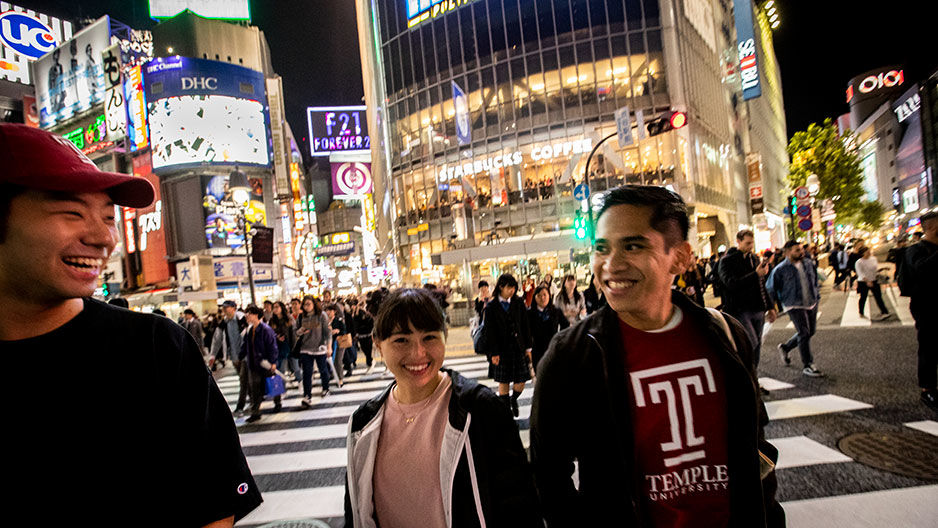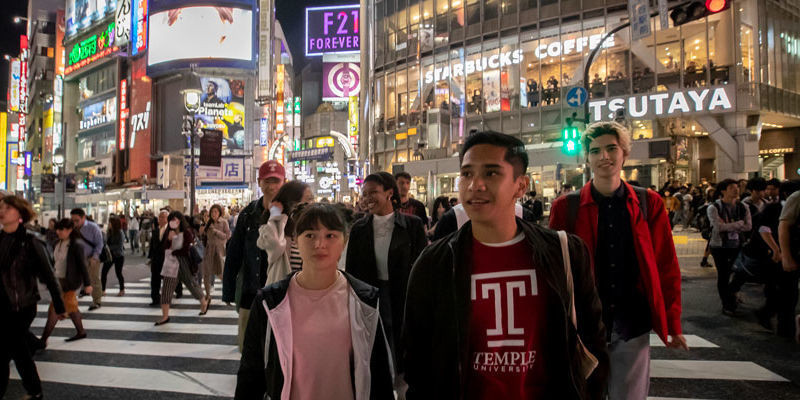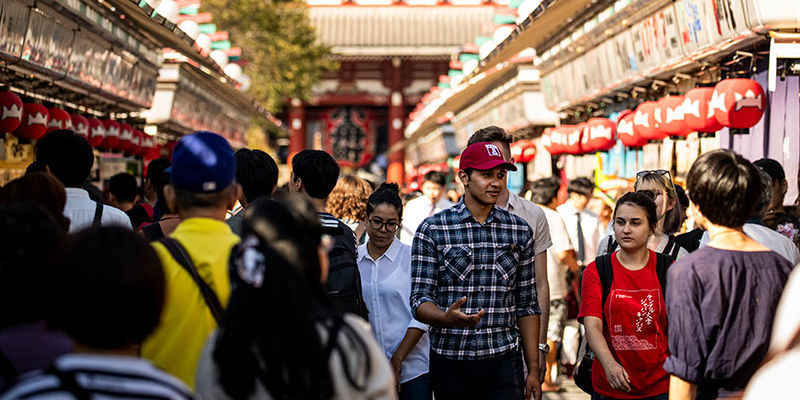Temple University Japan relocates to a new campus
The move marks the first time in Temple University Japan’s 37-year history that its students and faculty will enjoy a traditional university setting.

The start of the Fall 2019 semester marks a significant moment in Temple University Japan (TUJ)’s history: With the branch campus’ move to a new building on the campus of a Japanese university, it will mark the first time in its 37-year history that its students, faculty and staff will enjoy a traditional university setting.
In August, just before the start of the semester, TUJ’s faculty and staff moved from their previous location spread across three office buildings in Tokyo’s Minami-Azabu District, where the campus spent the past 23 years, to a brand new building specially built for TUJ on the campus of Showa Women’s University (SWU) in vibrant Setagaya City. The new campus is two subway stops from Tokyo’s famous Shibuya Crossing and located in the heart of a downtown area more suited to college students and young professionals.
“Temple University Japan has always been a trend-setter, and once again has made a major advancement with its move to a great new building at Showa Women’s University,” said President Richard M. Englert. “We have already seen an explosion of interest in TUJ among prospective students, and I know the faculty, staff and students will love their new home.”
The move to a traditional university campus and strengthening of the partnership with SWU will provide more opportunities for students and faculty at both institutions to learn from one another, increasing the universities’ profiles and impact around the world.
TUJ is the only institution in Japan where students can earn accredited American undergraduate and graduate degrees. The student body of roughly 1,200 students is currently about 40 percent Japanese and 40 percent American, with the remaining 20 percent from 50 to 60 other countries worldwide.
“We are not just moving location; we are moving from three office buildings to a traditional university campus,” wrote Bruce Stonach, TUJ’s dean since 2008. “While this is significant for our students and faculty, the move means far more for Japan, the U.S. and the world: It holds great potential to have a transformative impact on the meaning of higher education in the global era.”
TUJ and SWU are already partnering on credit exchanges, a double-degree program and various symposia. TUJ’s location on SWU’s campus will facilitate further collaboration across both institutions, said TUJ Dean Bruce Stronach, who has served in that role since 2008 and is co-authoring a history of TUJ with Rich Joslyn, a past dean.
A celebration and festival marking the new campus’ official debut is set to take place during the first week of November.
Read more about TUJ’s new campus, and read Stronach’s reflection on TUJ’s history and role as a leader in higher education in an increasingly global world.

